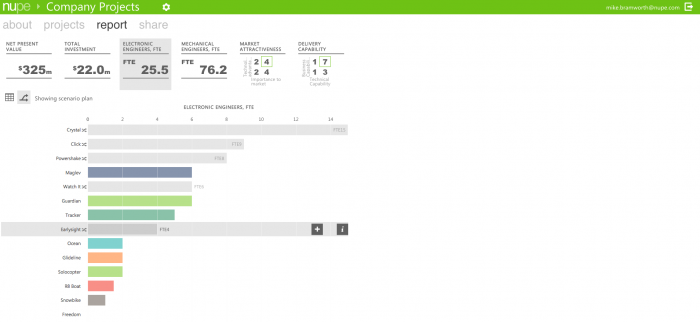Your first portfolio review

This is part blogs series about Portfolio Management, the discipline of managing which projects you do and which you don't.
So far we have observed that:
- Most organisations have a portfolio of projects that is profiled by evolutionary happenstance. Company projects are signed off by a disperse group of people for a myriad of reasons, some of which you’ll never fathom.
- The default response is to let this happen, perhaps with some sort of self justified ignorance in the hope that a ‘Post-it Note’ success story may materialise. Not many organisations have an effective Portfolio Mgt discipline.
- One consequence of not having a controlled Portfolio is that there are too many concurrent projects. This results in wide spread delays as they all legitimately compete for shared resources.
- There are more benefits to portfolio control than just project on-time delivery, but we’ll address these later.
So how do we hold a Portfolio review?
Step 1
Get the senior management team in a room.
The team profile should represent the authority to control resources in question. For example, large organisations should tier portfolio decision making. At Group level, the senior team should consider the overall strategy and allocate funding to the divisional level. A divisional level portfolio team should then take project decisions relevant to them.
Step 2
Present the profile of your portfolio. You should be able to highlight portfolio metrics such as:
- The total number of project
- The average number of projects per person
- Rough FTE demand
- Approximate total benefit
- Approximate total investment
Portfolio management is a process - it’s continuous. Over time you will want to hone the metrics used to ones that most aptly reflect your company objectives. However, at this early stage, the above set of metrics is a worthy starting point.
Step 3
Agree some targets. What is our growth target? What is our investment budget? What is the maximum number of FTEs we should plan for? How many concurrent projects should we target?
Step 4
Optimise the profile of your portfolio against the targets you’re set above. The easiest way to do this is to use a scenario planning tool such as nupe.com. You can read about portfolio management tools here. You can toggle projects on and off to simulate the impact of killing or postponing projects and note the net impact on the metrics used.

Look to kill projects that have little benefit or are in conflict with others. Throughout my career in setting up Portfolio Management processes, I’m constantly amazed how many projects are quickly and unanimously ruled out by the team. Remember, many projects are started by people just to keep themselves busy unaware that you have much better ways of using their time.
For this reason, I often regard the first portfolio review as the ‘Red Pen’ meeting. The projects to kill are surprisingly easy to agree upon, free up lots of resources and really gives the company a quick and much needed steer. Read case study here.
Now consider the priority of projects. Which ones should be postponed in order to concentrate on urgent, stronger ones. During the debate, it’s worth remembering that if there’s no prioritisation, every project suffers. So even if you are sponsoring a project that is widely considered a low priority, it will still benefit by being put on hold! Sounds paradoxical? - see previous post.
Warning! It is highly improbably that you will be able to optimize your portfolio to meet the targets set. Instead, you are more likely to have exposed serious holes in your project pipeline.
Not to worry, the first task is to de-clutter the portfolio. Once our current projects are under control we’ll them have time to consider what are the gaps and how do we fill them. That's next month's discussion.
Step 5
Communicate the portfolio decsions. Some people will be upset.
As a side-track, how do the owners of casinos get their customers to continue putting money into a machine knowing that they are going to lose in the long run? When someone does ocassionally win, every single light, bell and siren goes off. This isn't for the winners pleasure. It is communicate to the surrounding 'loosers' that this is a place where people do win.
I'd recommend taking a leaf out of the casino managers and take the opportunity to shout about the projects that are winning.
-
I'm always available to provide advice, training or process consultancy. If there's anything you would like to chat about, please don't hesitate to give me a call or drop me a line.
linkedin.com/in/mikebramworth
 Printer-friendly version
Printer-friendly version- Login or register to post comments
 Send to friend
Send to friend




